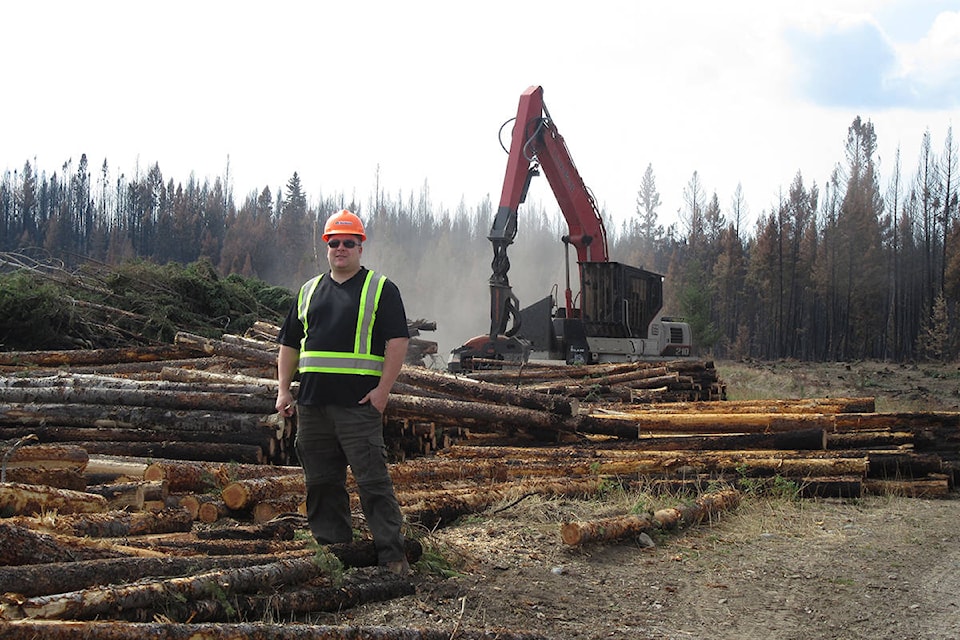Norbord is buying up wood burned by the Gustafsen wildfire.
A local logging contractor, Rod Dillman, is the first to begin harvesting in the Gustafsen fire area, says Mike Kennedy, Woodlands Manager with Norbord in an email. He adds that there are some unique challenges logging burned wood.
“According to Rod, a primary challenge in logging the burned wood is the increased maintenance needed on his machines. There is a lot of ash dust which, even more than ‘normal’ dirt, tends to stick to surfaces and must be washed off rather than just wiped. It also makes it necessary to change air filters more frequently. Finally, carbon in the ash is hard on the knives used in the harvesting equipment. Rod also states that they are learning as they go, as this is the first time he has operated in such a large area of scorched timber.”
Kennedy says that luckily there are a few things that have moderated the effect of the fires on the trees, meaning most of the wood is still intact underneath the bark.
“Certain species, for example, Douglas-fir with its thick bark, have evolved to withstand the effects of fire, which is a common natural event in the areas where it grows. Fire intensity was not uniform across the landscape, so in many places, trees were scorched on the bark only with minimal damage to the underlying wood. Entire trees are not necessarily affected, with more damage occurring in the bottom portion. It is often possible to buck this out with log processors at the roadside. Processing pressure can be increased to remove most of the severely burned bark or wood.”
They take pride in their adaptability to make the most of the fibre available and are very experienced using dry pine beetle killed wood, he says.
“Norbord maintains the highest quality standards for our products and these standards are ensured through third-party certification by APA - The Engineered Wood Association. We have been able to use burned wood in the past.”
There are numerous benefits to logging the burned wood, he says.
“By putting effort into prepping the soil and making the environment more favourable for planting, it often does mean a faster rehabilitation for the forest. This is not only great for wildlife, water and the many other environmental services provided by the forest, but also improves conditions and access for the full range of forest users. Beyond that is an added boost to the local economy that comes from utilizing forest fibre which would otherwise be left to decay.”
They’re currently working with private land owners looking to clean up and renew forest lands, but that most of the Crown forest affected is within the operating area of BC Timber Sales (BCTS), he says.
“While Norbord does not have an opportunity to plan or harvest timber in that area, we are encouraging BCTS to put the wood up for sale in the earliest possible timeframe. Norbord is ready and willing to cooperate with all stakeholders to start the renewal process as soon as possible and make the best use of wood that has been affected.”
With the wildfires, the biggest impact for Norbord was the evacuation of 100 Mile House and the surrounding communities where their employees live.
“Due to the hard work of many of our employees, contractors, first responders, and the BC Wildfire Services, we did not sustain any damage to our mill and, thankfully, everyone was able to get safely back to work.”
Their biggest challenge now is to get back into the forest safely, given the current fire hazard, and consequently limiting their operations until risk falls to an acceptable level, he says. He adds that even with the limited operations, they’re taking great care with water tanks, fire equipment, machinery and more.
“No one wants to start another fire!”
